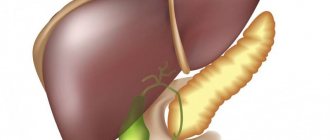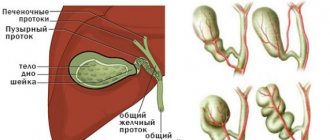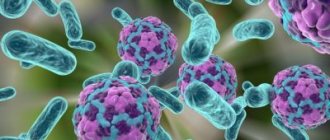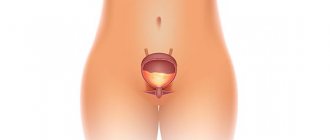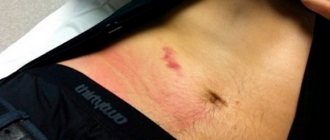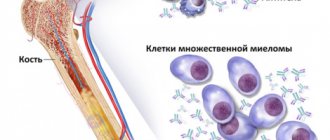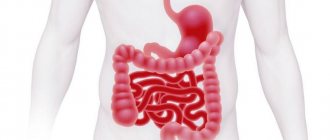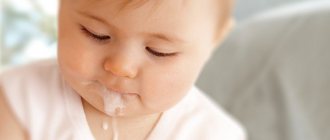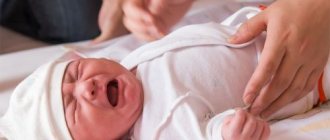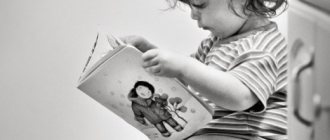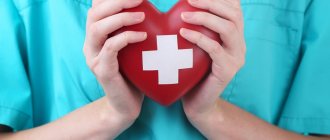Biliary dyskinesia in children, or BBD, is a common diagnosis given to children with recurring abdominal pain. What it is ? Is it dangerous? How to treat ? Let's answer these questions together.
Biliary dyskinesia in children is a combination of clinical symptoms caused by disruptions in the motor function of the gallbladder, bile ducts and sphincters.
This diagnosis is made when symptoms last for at least 3 months per year of observation.
JVP has a code according to ICD.10—K 82.8 Biliary dyskinesia in children is often observed.
The frequency of primary GIB in children is 10-15%, with other gastrointestinal diseases, concomitant GIB occurs in children in 90% of cases.
JVP is a functional disorder, and not a chronic disease, unlike cholecystitis.
Causes
- Poor nutrition. The child's body is very sensitive to food, since the stomach and other important organs that take part in digestion are not yet fully formed and are not ready for heavy loads.
- Thus, a child’s consumption of very fatty and fried foods can lead to the development of this disease. Parents do not always adhere to special diets and feed their daughters and sons exclusively steamed and boiled food. Most are of the opinion that after a year the baby can eat from the “common” table. This is a big mistake, since the baby’s body is not ready for such stress.
- Problems with the digestive organs. Very often, biliary dyskinesia accompanies diseases such as gastritis, pancreatitis, etc.
- Hepatitis. Today many children are carriers of this virus.
- Worms. As a rule, worms cause great damage to the child’s body, as they take all the necessary nutrients. And besides, due to its destructive actions, problems with the gallbladder may begin.
- Intestinal infection. When some kind of stick enters the baby’s body, it immediately develops, thereby provoking the appearance of symptoms such as nausea, weakness, and vomiting. The main symptom of intestinal infections is intoxication of the body, due to which the baby can suffer greatly. And an intestinal infection can provoke the development of complications, which, as a rule, are much more serious than the initial problem
- Problems with hormones. Often in childhood, hormonal disorders may appear, which are provoked by many factors. And because of such disorders, the likelihood that biliary dyskinesia may occur increases
- Nervous system disorders. The child’s nervous system is very vulnerable, and any emotional stress can provoke the development of problems that can later cause the development of other diseases.
- Physical exercise. Almost all pediatricians say that children should never be overloaded, especially physically, since their body is not designed and not ready for such stress.
- Fast growth. Sometimes the cause of the development of biliary dyskinesia can be the rapid growth of a child. This usually happens after 10 years, when the transition period begins. This happens most often in boys, because in 2-3 years they grow up and become about the same height as their parents. But the body does not always have time to adapt to such a change.
- Allergic reaction. Many people think that allergies are not scary, and they do not cause much harm to the body. But this is a serious misconception, since it can manifest itself in different ways, and it happens that the cause of simple peeling of the skin may not be a lack of water in the body, but an allergy. It is worth knowing that it all starts with the intestines, and often allergens penetrate other organs, provoking the development of serious complications. And, as a rule, parents do not pay attention to mild manifestations, although it is at this moment that unpleasant consequences can be prevented
- Congenital gallbladder defects
https://youtu.be/A56BDDIOA6U
Pancreatitis
Pancreatitis is a serious disease in which bile begins to digest the walls of the pancreas. The organ is located in the abdominal cavity near the duodenum. The gland produces digestive enzymes that are involved in the breakdown of food.
In children, acute and chronic forms of pancreatitis are distinguished. The most pronounced form of the disease is acute. The disease progresses to the chronic stage due to the lack of proper treatment.
Causes:
- Inflammation of the stomach and intestines (enteritis, colitis);
- Injuries to the abdomen and pancreas;
- Worm infection;
- Bile flow into the pancreatic ducts;
- Deposition of foreign substances in the ducts, as a result of stagnation of pancreatic secretions;
- Abuse of spicy and salty, fried, smoked foods, fast foods, fasting, overeating;
- Allergy to certain foods;
- A viral infection causes complications on the pancreas: influenza, chicken pox, dysentery, mumps;
- Intoxication with heavy metals (mercury, lead);
- Autoimmune diseases cause the body to produce antibodies against pancreatic tissue.
If the gallbladder is inflamed, the child must follow a strict diet. Treatment of children aged 3-6 years is carried out in a hospital.
For pancreatitis, the doctor may prescribe the following medications:
- Antispasmodics and painkillers;
- Antisecretory drug Famtidine;
- Drugs that improve microcirculation Trental, Dipyridamole;
- Glucose solution (injected intravenously).
Symptoms
- Pain in the liver area. It can be either aching or paroxysmal in nature. It all depends. How serious is the damage? Usually the pain appears an hour after eating. If a child has eaten a lot, and the food was quite fatty, then the pain attack will be much stronger than if he ate something more healthy and less harmful. In addition, severe pain can radiate to nearby organs, thereby causing even greater discomfort to the child.
- Nausea and sometimes vomiting. This happens as a result of a severe pain attack
- Abnormal stool. This can be either loose stools or, on the contrary, constipation. It all depends on individual characteristics and reaction to such a problem.
- Decreased blood pressure
- Rapid pulse, that is, palpitations that occur mainly during an attack of pain
- Sleep problems. Very often, children with this disease find it difficult to put them to sleep because they are constantly in pain. And they don't sleep very well
- Increased sweating, which can occur either during an attack of pain or simply during the day
- Headache
- In addition to the above symptoms, when examined by a doctor, the child will complain of pain in the right precostal area when he touches this place. It should be noted that with such symptoms, there will be no increase in body temperature.
- Hypokinetic form. The manifestations of this form are slightly different from the hyperkinetic one, since the pain usually does not spread to other organs and does not manifest itself as acutely. Usually, the child complains of unpleasant pain in the liver area (points to this place with a pen). Often, when experiencing stress or some other strong emotions, the pain may noticeably intensify and a feeling of pressure will appear in the area of the gallbladder.
- Lack of appetite, and the child may not pay attention even to what he likes so much, for example, not wanting candy or a banana
- Belching
- Bitter taste in mouth
- Nausea, which can be mild or very severe
- Problems with bowel movements, most often constipation
- Flatulence, which may cause the child to complain of abdominal pain
Bend of the gall
Bends and bends are most often congenital disorders of its anatomical structure, leading to a decrease in the functions performed by the organ.
Acquired forms of bends in young children can occur when:
- prolonged psycho-emotional stress;
- overweight;
- excessive physical activity, intense physical activity, heavy lifting;
- errors in nutrition.
Symptoms include heaviness, pain in the right side of the abdomen and bloating, fever, changes in body temperature, and abnormal bowel movements. The baby's appetite decreases, since meals may be accompanied by a feeling of nausea and vomiting.
With a long course of the pathology, there is a lack of fat-soluble vitamins, due to the fact that lipids supplied with food are not completely broken down, muscle tone decreases, and vision deteriorates.
In childhood, cholelithiasis can sometimes occur, which is aggravated by the formation of a bend in the organ. At the same time, it begins to sag under the weight of the stones formed in it.
Features of the manifestation of symptoms of the disease in children
- A lot at one time. This happens when there is no systemic nutrition, but only snacks.
- Large amounts of food, overfeeding the baby. This happens to those children whose parents are manic about portion sizes and believe that a child should eat almost the same amount as an adult. And he shouldn’t refuse food
- Fast food. Everyone knows that fast food is the most unhealthy food there can be. Such dishes are prepared in a huge amount of vegetable oil, making the product dangerous to the health of the child.
Diet for children with biliary dyskinesia
First of all, exclude all sweets, flour and carbonated foods. Parents will have to forget about fatty and fried foods for a while. The child's diet should consist of steamed, boiled and baked foods. You can prepare all kinds of porridges, soups from lean meats, vegetable side dishes, casseroles, and fish. Sweets in the form of marshmallows, honey, and marmalade are allowed. Any fermented milk products are welcome.
If dyskinesia of the hypotonic type is detected, then products with a pronounced choleretic effect are added. These are juices, vegetable oil, eggs, berries, fruits.
You will have to follow the diet for a long time. The frequency of meals should not be reduced either. The optimal norm is 4-5 meals of the right food every day. Dishes should not be too hot or cold. In the first stages of treatment, this can provoke an attack of pain and colic.
Diagnostics
- Ultrasound examination of the gallbladder. During this procedure, the doctor completely studies the structure of the bladder, its ducts, records the dimensions, considers whether there are any congenital defects that can cause pain, etc. All results are recorded and sent directly to the attending physician
- Ultrasound examination before and after breakfast. If any abnormalities were noticed on the initial ultrasound, the doctor will have to conduct the following study: the child is given an ultrasound before he has breakfast. Then, the child is given something to eat, fatty food at that, and after half an hour or forty minutes another ultrasound examination is performed. During it, you will see how much the bladder will shrink, and what form of the disease is present in the baby
- Duodenal sounding. To conduct this study, you need to prepare the child well, as it takes quite a long time, and the procedure is very unpleasant. So, a probe is inserted into the duodenum, with the help of which bile is examined. For this, several samples are taken. True, this method is used very rarely today, since it is rare that a child will be able to withstand this procedure
- X-ray. This study is not done for all children, but only for those who, based on the results of an ultrasound examination, were found to have congenital malformations of the gallbladder and its ducts
- Endoscopic retrograde cholangiopancreatography. This study is very serious and is carried out very rarely, only on special instructions from a specialist.
Gallbladder in children and adults - main functions
The biliary system of our body consists of the liver, gallbladder and bile duct system. The bladder itself is located in the area of the right hypochondrium, immediately under the liver, in a special bed. A normally functioning gallbladder in a child (as well as in an adult) performs the following important functions:
- accumulation and storage of bile, which is continuously produced by the liver;
- bringing it to the optimal consistency;
- the release of this liver secretion into the duodenum when food enters the gastrointestinal tract.
Bile is a very important substance for normal digestion, the main purpose of which is to:
- emulsification (breakdown) of heavy fats;
- neutralization of pepsin contained in gastric juice;
- assistance in the synthesis of micelles;
- increased production of hormones in the intestines;
- preventing protein and bacterial molecules from sticking together;
- maintaining the normal state of intestinal microflora.
In addition to the functions listed above, bile also stimulates the formation of mucus and the motility of the digestive organs, and also takes part in the breakdown of proteins.
And the normal functioning of the pancreas also depends on the quantity and quality of this liver secretion.
Treatment
- The baby needs to eat about 4 or 5 times a day and in small portions so that the load on the gallbladder is as little as possible
- The baby must be fed strictly at certain hours, and the break between feedings should always be the same (about 3 hours)
- It is best to steam it, or simply boil it. In addition, it is better to give preference to pureed food or well-chopped
- You need to exclude foods such as lard, fried foods, legumes, nuts, sweets, buns, sparkling water, etc.
- You need to include easily digestible carbohydrates in your diet, which can be obtained from marshmallows, marshmallows, and jam. As well as other products - sour cream, butter, cheese, not spicy, beets, carrots, all fresh fruits, as well as strawberries and raspberries
- Medicines that help relax smooth muscles. Usually this is No-shpa, Odeston
- Medicines that calm the nervous system. Usually it is valerian or motherwort
- Magnesium
- Only a doctor can prescribe this or that medicine, since they all have side effects and contraindications.
If a child has exacerbations rarely, and he is not bothered by pain, then the doctor may recommend drinking mineral water, such as Slavyanovskaya, Essentuki.
- Treatment of hypomotor form. For children who have this particular form of the disease, there are slightly different recommendations. So, you need to follow a daily routine, clearly alternating periods of wakefulness and sleep in order to calm the nervous system. Also, an active lifestyle is recommended, of course, without heavy loads.
- In this form, the tone is, on the contrary, reduced. And therefore, foods that will help increase it should prevail in the diet. So, it is better to eat milk, sour cream, and fruits.
Biliary dyskinesia is a rather unpleasant disease. But if it is detected in a timely manner, and all doctors’ recommendations are followed, it can be cured. True, you will need to spend a lot of time and effort on this!
Cholecystitis is a very common problem among the youngest population.
This is due to the fact that a variety of reasons lead to the development of the disease, in particular bacterial infections, which the child’s immature immune system cannot fully resist, helminthic diseases, which are also very common among children, as well as poor diet and sedentary lifestyle.
Thus, this pathology can occur both in children in the first years of life and at an older age. Age does not matter.
Cholecystitis in children is considered a very serious disease that negatively affects the quality of life of the baby, so the task of parents is to recognize the disease in the early stages of its development and begin treatment as soon as possible. Otherwise, very unpleasant and dangerous complications may develop.
How to treat biliary dyskinesia in children? Find out about this from our article.
Dyskinesia
Dyskinesia is inflammation of the gallbladder in a child due to physiological reasons. There are hypertensive and hypotonic forms of the disease. In the hypertensive form, an increase in gallstone tone is observed. In the hypotonic form, organ contraction is reduced, and bile stagnation is observed.
In children, the primary type of the disease occurs only in the form of congenital deformation of the biliary tract.
All other causes are secondary and are complications after inflammatory processes in other organs:
- Past infections, giardiasis;
- Past viral hepatitis;
- Gastritis – inflammation of the gastric mucosa;
- Duodenitis is an inflammatory process of the duodenum.
Concept and characteristics
Cholecystitis is an inflammatory disease affecting the gallbladder area. This organ is important in the digestion process, as it produces bile containing digestive enzymes.
Inflammation in the gallbladder disrupts the functionality of the organ, and therefore the entire digestive process is disrupted, which leads to the development of characteristic symptoms of the disease.
Proper nutrition, digestion of food and absorption of nutrients is a prerequisite for the proper development of the child’s body.
Violation of this process leads to very undesirable consequences, such as developmental delays, intoxication of the body, pain, which significantly reduces the quality of life.
However, a localized form is rare, in which the inflammatory process affects only the gallbladder. Much more often, the source of inflammation spreads to the area of the biliary tract and liver.
Gallbladder diseases that occur in childhood
All diseases of this organ in a child can be grouped according to the reasons that provoke them. These are the reasons:
- functional diseases. This group of pathologies is characterized by a disruption of the normal motility of the organ itself and its ducts. In medicine, such ailments are called dyskinesias, which are divided into hyperkinetic (too strong contractility of the walls of the bladder and/or its ducts) and hypokinetic (on the contrary, too sluggish contractility of the muscles of the organ);
- inflammatory pathologies. This group of diseases develops as a result of inflammation of an acute or chronic nature as a result of the presence of concomitant diseases or infectious lesions. Such ailments are divided into cholecystitis (inflammation of the walls of the organ itself), cholangitis (inflammation of the bile ducts) and cholecystocholangitis (general inflammation of the bladder and ducts). Such diseases are quite possible in a child;
- metabolic pathologies that arise as a result of disturbances in the normal course of the metabolism of cholesterol, bile pigment (bilirubin) and bile acids. As a result of such disorders, the chemical composition of bile changes, which leads to the formation of gallstones. In addition, cholelithiasis can also provoke cholestasis (stagnation of bile in a child in the bladder cavity), which can be caused by dyskinesia, inflammation and other pathological processes that impede bile outflow;
- congenital abnormalities of the development of this organ, which cause disturbances in its normal functioning (found in newborns). Such diseases include kinking of the gallbladder, its complete absence, hypoplasia (underdevelopment) of the organ, its location inside the liver, wandering gallbladder, double (accessory) organ, the presence of internal partitions in the organ cavity, diverticula (protrusions) of the bladder walls, atresia (lack of holes for the outflow of bile) and various cystic formations in the organ itself and its ducts;
- parasitic lesions of the organ (helminths or lamblia). This group of diseases includes: opisthorchiasis (infection with the Siberian fluke), giardiasis (infection with Giardia), fascioliasis (infection with the liver fluke), dicroceliosis (the parasite is the lanceolate fluke) and clonorchiasis (infection with the Chinese fluke);
- various pathologies associated with benign and malignant tumors. As a rule, such diseases are diagnosed very rarely in children.
Read also: How to remove bilirubin stones in the gall bladder?
Diseases of an organ such as the gallbladder, as well as the biliary tract, can occur in children for many reasons, but most often such pathologies are either congenital in nature or associated with improper diet and a sedentary lifestyle of the child.
Causes and risk factors
The main causes of the occurrence and development of cholecystitis in a child are bacterial infections (the causative agent can be different, most often these are staphylococci and streptococci), the presence of chronic foci of infection in the body (for example, advanced caries), as well as helminthic and parasitic diseases (for example, giardiasis ).
However, these reasons are far from the only ones. So, there are a large number of other risk factors, the presence of which can lead to the development of gallbladder pathology:
- Poor nutrition. In particular, violation of the eating pattern (long breaks between meals, leading to stagnant processes in the gallbladder), consumption of large amounts of foods rich in carbohydrates, rare consumption of vegetables and fruits rich in fiber, overeating.
- Sedentary lifestyle.
- Structural anomalies or injuries of the biliary tract that disrupt the process of outflow of produced bile.
- Diseases of the endocrine system (for example, diabetes, obesity).
- Frequent stress, associated, for example, with a sharp change in daily routine, living conditions, and unfavorable family conditions.
- Allergic reactions to food.
- Intoxication of the body, including food poisoning.
- Diseases of the autonomic nervous system.
- Persistent disruption of the immune system.
Classification of pathology
According to the international classification ICD-10, the disease is labeled under code Q44.1 - other congenital anomalies of the gallbladder.
Sub-items include:
- Q00-Q99 – abnormal structure and development of the gallbladder, deformations and chromosomal abnormalities.
- Q38-Q45 – other defects, anomalies in the development of organs of the hepatobiliary system.
- Q44 – congenital anomalies and malformations of the gastrointestinal tract.
It should also be understood that developmental defects can be acquired, as well as deformations that arise during the intensive growth and development of the child.
https://youtu.be/VmAjSZ9tdlY
Symptoms and signs of pathology
Characteristic signs of the development of cholecystitis are the following symptoms :
- Bitter taste in the mouth, which is most pronounced after sleep or prolonged fasting.
- Loss of appetite.
- The appearance of vomiting.
- Stool disorders (diarrhea, constipation, or their alternation).
- Acute attacks of pain localized in the area of the right rib.
The clinical picture of the disease can be supplemented by such signs as:
- An increase in the size of the liver and pain in this organ when pressing on it.
- Pain in the gallbladder area.
- Consolidation of the anterior abdominal wall, its tension during exposure.
- Persistent hyperthermia (antipyretics have a short-term effect).
- Leukocytosis, increased ESR in the blood, indicating the presence of an inflammatory reaction.
- Symptoms of jaundice (extremely rare).
- Disturbances in the functioning of other organs and systems (cardiovascular, endocrine, respiratory).
Acute cholecystitis
Inflammation of the mucous membrane occurs when infectious agents enter it (hematogenously or lymphogenously), which most often are Escherichia coli or staphylococci.
Concomitant cholelithiasis and structural anomalies contribute to the occurrence of cholecystitis. Young patients with acute inflammation complain of:
- intense pain in the upper abdomen;
- discomfort, heaviness in the right half of the abdomen;
- belching, nausea, vomiting;
- fever up to 37.5 degrees;
- general weakness, malaise.
Diagnostics
To identify the disease, the doctor examines and interviews the patient. However, since the disease can have a hidden course, this data is not always enough to determine a detailed picture.
Therefore, additional laboratory and instrumental diagnostic , including:
- blood test for the level of leukocytes and ESR (with cholecystitis, these indicators are increased);
- blood test for enzymes (sialic acid, transaminase, alkaline phosphatase);
- echography of the gallbladder to determine its size and condition of the walls;
- laboratory examination of bile.
Diagnostic measures for dyskinesia
Due to its similarity with other gastrointestinal diseases, intestinal dyskinesia is diagnosed by excluding the suspected pathology. A phased examination of a child includes several activities:
- endoscopy;
- coprogram;
- irrigoscopy;
- biopsy - according to indications;
- stool occult blood test;
- exclusion of pathological neoplasms in the intestine.
Treatment options
Only complex therapy , including drug treatment, the use of herbal preparations, traditional medicine, and adherence to a proper diet, will help eliminate the causes and manifestations of cholecystitis.
Medications
Therapy of the pathology is impossible without taking of medications :
- Antibiotics (if the cause of the disease is a bacterial infection).
- Antihelminthic drugs (for helminthic infestations).
- Painkillers for severe pain.
- Antispasmodics that normalize the functioning of the affected organ.
- Drugs that promote proper flow of bile.
- Symptomatic drugs prescribed for damage to other organs.
Phytotherapy
A positive therapeutic effect is provided by the use of various herbal decoctions, which help normalize the production and outflow of bile and eliminate the inflammatory process.
Decoctions are prepared from plants such as strawberries, anise, rose hips, birch buds, yarrow flowers, mullein, elecampane root, burnet, chicory, and hop cones.
The course of treatment varies in duration depending on the form of the disease. Thus, in the chronic form, long-term use of herbal medicines is recommended (up to 10-12 months), but recommendations in each specific case are determined by the doctor.
Traditional medicine
In the fight against the manifestations of the disease, time-tested folk recipes also provide effective assistance, such as:
- Rowan juice. To prepare it, juice is squeezed out of ripe rowan fruits, which must be taken in 50-100 ml doses. 3 times a day half an hour before meals.
- Salt and lemon . The juice obtained from 1 lemon is mixed with 1 liter. boiled water, add 1 tbsp. salt. The resulting solution is taken once a day on an empty stomach in the amount of 1 glass. The duration of treatment is 7-10 days.
- Juice mixture. You need to take 3 parts lemon juice and 1 part each cucumber, beetroot, and carrot juice. The resulting product is taken 2 times a day, 0.5 cups.
Diet therapy
Diet is an important step in the treatment of cholecystitis.
So, from the child’s diet it is necessary to exclude fatty, fried, spicy, pickled foods, foods that are difficult to digest.
It is recommended to consume dairy products (low-fat), boiled or steamed fruits and vegetables, lean meat and fish.
It is important to remember that dishes should be crushed as much as possible, preferably in the form of purees. It is better to avoid eating solid foods.
Treatment of gallbladder diseases in childhood
Treatment of any pathologies of this organ (both in adults and children) must be carried out in conjunction with a diet called “Treatment Table No. 5”. Without this, any therapy will be a waste of time and money.
Food restrictions in such cases concern not only the diet, but also the child’s diet. He will have to eat little by little, but often (five to six times a day). Food should be warm, since hot and cold negatively affect the digestive process. Food can only be cooked by steaming, boiling or baking. Drinking plenty of fluids is recommended. Fried, spicy, fatty and smoked foods, fast food, any kind of pickles, canned food, mushrooms, legumes, sweets, flour, chocolate, baked goods, carbonated drinks and a whole range of other foods harmful to the body should be excluded from the diet.
It is allowed to eat lean dietary meat (white meat chicken, veal, rabbit) and fish (pike perch, pike). The basis of the diet should be fresh and boiled vegetables, soups with vegetable broth, porridge based on buckwheat, semolina, rice and oatmeal, as well as cottage cheese and low-fat fermented milk products. Bread should be consumed either yesterday or dried. For sweets you can have dried fruits, marshmallows and honey.
For some pathologies of this organ in children (for example, for the treatment of cholestasis), doctors recommend physical therapy exercises under the supervision of qualified specialists, as well as some types of physiotherapeutic procedures.
If we talk about medications, then for each case the doctor selects them individually. The pain is relieved with the help of antispasmodic drugs (“No-spa”, “Drotaverine”, etc.). Stagnation of bile can be cured by choleretic drugs (for example, Allohol). In the presence of inflammation, anti-inflammatory drugs and antibiotics are used. If the parasitic nature of the pathology is discovered, drugs from the group of nitrofurans, nitramidazoles and benzimidazoles are prescribed. Sometimes there is a need to take hepatoprotectors (Essentiale Forte) and enterosorbents (activated carbon).
Inna Lavrenko
auto RU
It should be remembered that many medications have age restrictions, so depending on how old the child is, different medications are prescribed. Medicines intended for children under one year old, from 2, 10 or 12 years of age have a corresponding warning in the instructions. Therapy can be carried out simultaneously with two or more types of drugs.
Read also: How do liver stones form without a gallbladder?
In cases where conservative methods do not bring the desired result, surgery is used.
The most common operation is removal of the gallbladder (cholecystectomy), which is usually performed using the least traumatic laparoscopy, from which recovery is fairly quick.
Clinical guidelines
Since cholecystitis is a very common problem in children, the rules for diagnosing and treating a sick child are provided for at the legislative level .
This document contains all the recommendations regarding the rules of diagnosis (which can pose a serious problem in the absence of clinical manifestations) and treatment (therapy regimen and list of drugs recommended for use by young children).
Clinical protocol for the diagnosis and treatment of cholecystitis in children.
What does a child complain about with dyskinesia?
Dyskinesia of the excretory tract manifests itself in a child as a complex of symptoms. The main complaints of children with bile excretion disorder are pain in the abdomen, often in the navel area. The nature of the pain is acute. Attacks appear some time after eating or during severe psycho-emotional stress. Attacks of pain are accompanied by nausea, even vomiting, bloating, and a bitter taste of food in the mouth.
Attacks of pain
When examining the tongue, a yellow coating may be detected. In the hyperkinetic form of dyskinesia, when the tone of the walls of the bile ducts and sphincters increases, stagnation of bile forms in the canals of the biliary apparatus, the child’s skin acquires a yellow tint, like the sclera of the eyes.
Very young children with dyskinesia try to pull their legs towards their stomach to reduce pain. Infants experience frequent regurgitation, loss of appetite, and poor weight gain.
JVP of the hypertensive type occurs with increased irritability and aggressiveness of the child. It “boils” sharply and “cools down” quickly. Increased fatigue, lethargy against the background of colicky abdominal pain suggests the development of biliary dyskinesia.
Diagnosing dyskinesia will help identify the cause of symptoms and determine treatment.
Prevention
In order to prevent the development of cholecystitis in a child, it is necessary:
- Protect the baby from contact with bacteria, identify and treat bacterial and helminthic diseases in a timely manner.
- Prevent the development of chronic foci of infection in the body.
- Monitor your baby's diet and lifestyle.
- Strengthen immunity.
Cholecystitis is a common but very insidious disease that cannot always be detected in the early stages of its development.
However, this is very important, because over time the disease becomes chronic, which makes treatment even more difficult.
A variety of causes and diseases can lead to the development of pathology, and, in turn, cholecystitis itself can serve as a prerequisite for the development of serious complications .
Dr. Komarovsky about problems with the gallbladder in children in this video:
We kindly ask you not to self-medicate. Make an appointment with a doctor!
Diagnostic methods
Making a diagnosis begins with an initial examination and collection of anamnesis, on the basis of which the doctor decides to prescribe certain diagnostic tests. Since many gallbladder diseases have similar symptoms, such studies cannot be avoided.
Ultrasound of the abdominal organs
Based on primary data, the doctor can prescribe the following instrumental and laboratory examinations (in combination and separately):
| № | Helpful information |
| 1 | biochemical and general blood tests |
| 2 | Ultrasound of the abdominal organs |
| 3 | urine and stool tests |
| 4 | duodenal intubation |
| 5 | computed tomography (CT) |
| 6 | magnetic resonance cholecystography (MRI) |
Read also: What choleretic drugs are needed when the gallbladder is bent?
An ultrasound will have to be done several times, since this study should show the development of the pathology, the results of its treatment and the condition of the organ after the end of the course of therapy.
Treatment of dyscholia
After the root cause of dyscholia, the severity and damage to the body, provoked by a combination of pathological processes, have been established, the doctor makes a final diagnosis and prescribes appropriate treatment.
The therapeutic course includes several basic provisions:
- Treatment of the disease that caused dyscholia.
- Dieting.
- Elimination of stagnant processes in the bile ducts. The patient is prescribed medications, the action of which is aimed at increasing the production of bile and improving its outflow.
- Normalization of emotional state. Mental health has a great impact on the functionality of all organs and systems.
A diet that will reduce the symptoms of the disease and help normalize bile production involves avoiding fatty foods. Proper nutrition means introducing into the diet only those dishes that are steamed, boiled or baked. For cooking, use only olive or vegetable oil. Fatty fish and meats are excluded from the diet. Spicy seasonings, smoked meats and other products that can negatively affect the functionality of the digestive system should also be avoided.
The patient is recommended to eat frequently (5-6 times a day), but in small portions. You should also follow a routine, i.e., eating should happen at the same time every day.
In order for the treatment to be successful, in addition to following all medical recommendations, the patient is recommended to normalize his physical activity.
https://youtu.be/lwDtC09lK8I
ethnoscience
Conservative treatment of gallbladder dyscholia is supplemented with traditional medicine. With the correct choice of medications and their dosage, such therapy is considered gentle. It is precisely because of the mild effect on the body that folk recipes are recommended for children.
Anti-inflammatory and choleretic drugs include:
- Wheat bran. They are poured with boiling water, infused, and then added to food. Bran helps reduce cholesterol levels.
- Wild strawberry. Has a mild choleretic effect. Not only the fruits of the plant have healing properties. Tea is made from strawberry leaves.
- Sauerkraut juice. For dyscholia, which is combined with an ulcer or gastritis, this therapy is carried out.
- Rose hip. A decoction of berries helps strengthen the immune system. This remedy helps lower blood pressure. Therefore, if the patient has hypotension, rose hips are contraindicated.
- Decoction of immortelle inflorescences. It has a choleretic effect and normalizes its composition.
- Mint. Soothes pain in the right hypochondrium and relieves inflammation. Peppermint tea will help cope with bouts of nausea.
- Boiled beet juice. It has an anti-inflammatory effect and normalizes bile secretion.
- Tincture from angelica roots. Improves the functioning of the endocrine system and has an analgesic effect during an attack of pain. It has a positive effect on the digestive system and the body.
- Corn silk. The decoction promotes the outflow of bile and normalizes its concentration in the organs.
Traditional medicine recipes are good assistants in the process of basic treatment. But you cannot try to cope with the disease on your own using only such treatment methods. Incorrect dosage or the presence of contraindications to the use of a particular drug can only worsen the patient’s situation. Self-medication is especially dangerous for children. To prevent the development of complications, you should consult your doctor before using any folk remedy.
In order to prevent complications in the future, patients whose dyscholia has been treated in a timely manner are recommended to undergo regular scheduled examinations for the purpose of prevention and lead a healthy lifestyle.
Pathological changes in the biliary tract can develop at any age. That is why it is very important to identify and eliminate the disease in a timely manner, without waiting for serious and often irreversible changes. The information provided discusses the main causes and signs of gallbladder dyscholia, as well as treatment methods.
Diet
Compliance with dietary nutrition is key in the treatment of dyscholia. It will help relieve the symptoms of the disease and normalize the production of bile secretions. All dishes must be cooked in the oven or steamed. Frying food is strictly prohibited! Stewed and boiled dishes are also recommended. Patients should eat fractionally, in small portions. The last meal should be no later than three hours before bedtime.
The basis of the diet of patients with dyscholia is porridge. You can add steamed wheat bran to them; they will help lower cholesterol and speed up the healing process. The following products are strictly prohibited for consumption:
- rich broths;
- alcoholic drinks and sodas;
- spices, herbs;
- smoked meats, canned food, marinades.
Important! Berry and fruit compotes, as well as rosehip decoction, will help normalize the composition of bile.
An active lifestyle plays a big role in preventing dyscholia
Advice from Dr. Komarovsky
Concerning JVP, the famous pediatrician Dr. Komarovsky gives the following recommendations:
- Do not overfeed your child. According to the doctor, children suffer from biliary dyskinesia for the most part due to overfeeding by overly caring mothers, which is not observed in large families.
- Follow your doctor's recommendations and follow the therapeutic diet prescribed by your doctor.
- Do not force the baby to eat (if there is no appetite).
- Limit the consumption of junk food (sweetened carbonated drinks, crackers, chips, etc.).
- Avoid long periods of fasting. Therefore, if a child refuses to eat for a day or more, it is necessary to consult a doctor.
- Do not self-medicate under any circumstances.
And, of course, first of all it is important to confirm the diagnosis. Otherwise, the treatment will be pointless, and may even harm the fragile child’s body.
